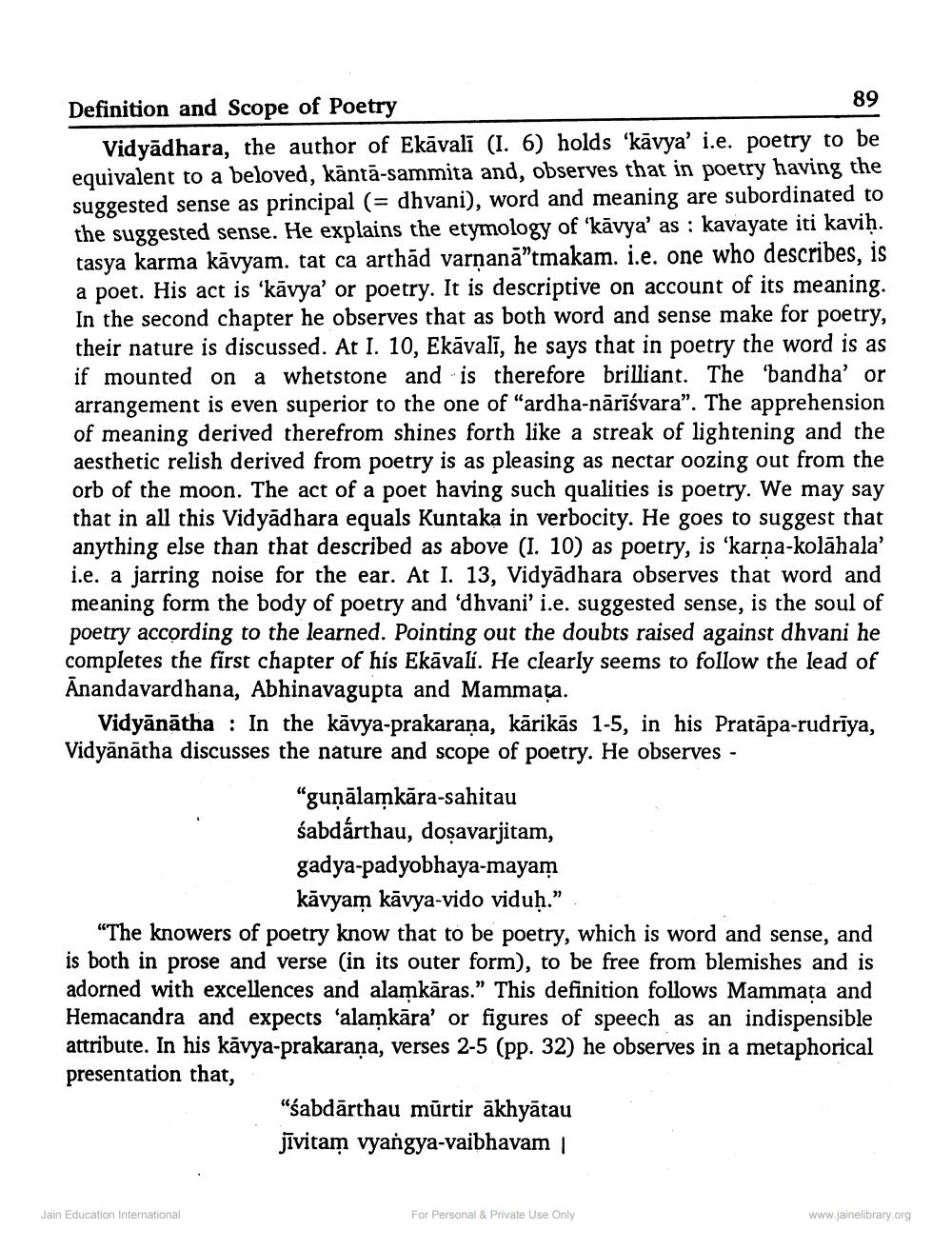________________
Definition and Scope of Poetry
89 Vidyādhara, the author of Ekāvali (I. 6) holds 'kavya' i.e. poetry to be equivalent to a beloved, kāntā-sammita and, observes that in poetry having the suggested sense as principal (= dhvani), word and meaning are subordinated to the suggested sense. He explains the etymology of ‘kāvya' as : kavayate iti kavih. tasya karma kävyam. tat ca arthād varnanā"tmakam. i.e. one who describes, is a poet. His act is ‘kāvya' or poetry. It is descriptive on account of its meaning. In the second chapter he observes that as both word and sense make for poetry, their nature is discussed. At I. 10, Ekāvalī, he says that in poetry the word is as if mounted on a whetstone and is therefore brilliant. The 'bandha' or arrangement is even superior to the one of "ardha-nārīśvara”. The apprehension of meaning derived therefrom shines forth like a streak of lightening and the aesthetic relish derived from poetry is as pleasing as nectar oozing out from the orb of the moon. The act of a poet having such qualities is poetry. We may say that in all this Vidyadhara equals Kuntaka in verbocity. He goes to suggest that anything else than that described as above (I. 10) as poetry, is 'karna-kolāhala' i.e. a jarring noise for the ear. At I. 13, Vidyādhara observes that word and meaning form the body of poetry and 'dhvani' i.e. suggested sense, is the soul of poetry according to the learned. Pointing out the doubts raised again completes the first chapter of his Ekávali. He clearly seems to follow the lead of Anandavardhana, Abhinavagupta and Mammata.
dyānātha : In the kāvya-prakarana, kārikās 1-5, in his Pratāpa-rudrīya, Vidyānātha discusses the nature and scope of poetry. He observes -
"guņālamkāra-sahitau śabdárthau, dosavarjitam, gadya-padyobhaya-mayam
kävyam kāvya-vido viduḥ.” "The knowers of poetry know that to be poetry, which is word and sense, and is both in prose and verse (in its outer form), to be free from blemishes and is adorned with excellences and alamkāras." This definition follows Mammata and Hemacandra and expects 'alamkāra' or figures of speech as an indispensible attribute. In his kävya-prakarana, verses 2-5 (pp. 32) he observes in a metaphorical presentation that,
"Sabdārthau mūrtir ākhyātau jīvitam vyangya-vaibhavami
Jain Education International
For Personal & Private Use Only
www.jainelibrary.org




